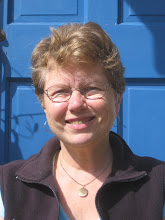"For Stephanie"
I was born in a flat on Joralemon Street, a 15-minute walk from the railroad, which took my father to NYC every working day.
Now, I ought to give some perspective on my father’s sad situation in his teens. As a small child, the oldest of four, his life had begun well enough in Flatbush, then an attractive section of Brooklyn. His father, Harry Singer Chinnock, an importer of Oriental artifacts, had prospered for a time but only when there was a vogue for his wares. With failure, he was invited by his father-in-law, the hatter, and moved his family to a duplex his father-in-law, with foresight, had built in Belleville.
A word about my grandfather’s ancestry: he came of the gentry of Somerset, in southwestern England, from an area, which still bears our name.
Grandpa’s father, Charles Chinnock, married a 15 year-old girl whose father bottled wines for the British Government and whose mother’s Welch family owned coal miles. Charming Charley soon lived high on the hog, spending his wife’s money. When his father-in-law noticed the racehorse named the Bee’s Wing and a quasi-yacht of the same name and the portrait of charming Charley by a well-known painter, he wisely settled an annuity on his daughter.
Once Charley could no longer keep up on the fast track, he took his burgeoning family to Canada where he set about inventing a method for canning lobsters. With a contract for the British Navy, he disregarded the advice of his Canadian son-in-law and chose not to take out that new-fangled insurance. As luck would have it, a storm in the Atlantic sent all the lobsters back into the sea – in cans. Declaring himself bankrupt, Charley moved his large family to Brooklyn and continued to work on inventions.
Handsome Harry was also a merchant in lower Manhattan. He courted Mamie Raymond, who became my grandmother. Mamie came of Colonial ancestors, of families settled in Manhattan in the 17th century, Dutch and English. The Raymonds had come to this country with General Rochambeau who helped the Colonists defeat British claims to the Colonies. As the Raymonds were a rather proud family, I don’t know why Mamie chose to marry Harry except that, at the time, he was doing okay and she was not at all pretty, though a forceful little dame.
When Mamie’s English husband failed in business and moved to Belleville, matters did not get better for Harry Chinnock, Sr. He took to smoking and drinking alcohol. He died of cancer in 1915. I have a photograph of him. He was very tall and, for all his failures, patently a gentle gentleman. I liked him.
But that left my father poverty-stricken at 17. He couldn’t afford to attend his own graduation for lack of proper clothing. He spent his last two dollars to go by train and ferry to NYC to look for a job. He found one with a boiler manufacturer. From then on, he would support his mother for the rest of her long life.
One summer, with a group of young men friends, he went camping at a lake in northwestern New Jersey. There he happened to set eyes on my mother, riding a white horse with her golden hair down. He managed to get introduced. He was 22. She was 17 and came from Paterson NJ. Her family had a summer camp at the lake. Five years later he married Bertha White.
Sometimes we hear of people marrying “up” or marrying “down.” Such shifting social situations are endemic in the USA where classes are not as stratified as in Europe. So, it might be said that my father married down and my mother married up, even if her family did manage to have a summer camp at Green Pond.
Now to my mother’s family …”
Bea wrote the above on June 9, 1999 at 11:45 AM and indicated it was for Stephanie, who had expressed an interest in family history. My daughter is here to see her grandma but she will sleep through the first day of the visit, after a night of quiet chatter. Stephanie’s boyfriend, Jamie, tells me there are 2000 cells in the brain (the suprachiasmatic nucleus) which drive the sleep urge (the circadian rhythm). As you age, these cells start to die off. This is why Bea sleeps two or three days in a row and stays awake for one or two …



0 Comments:
Post a Comment
<< Home